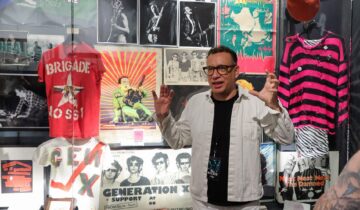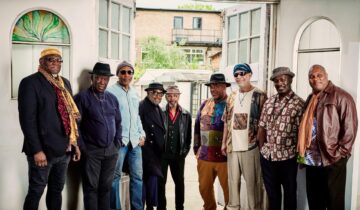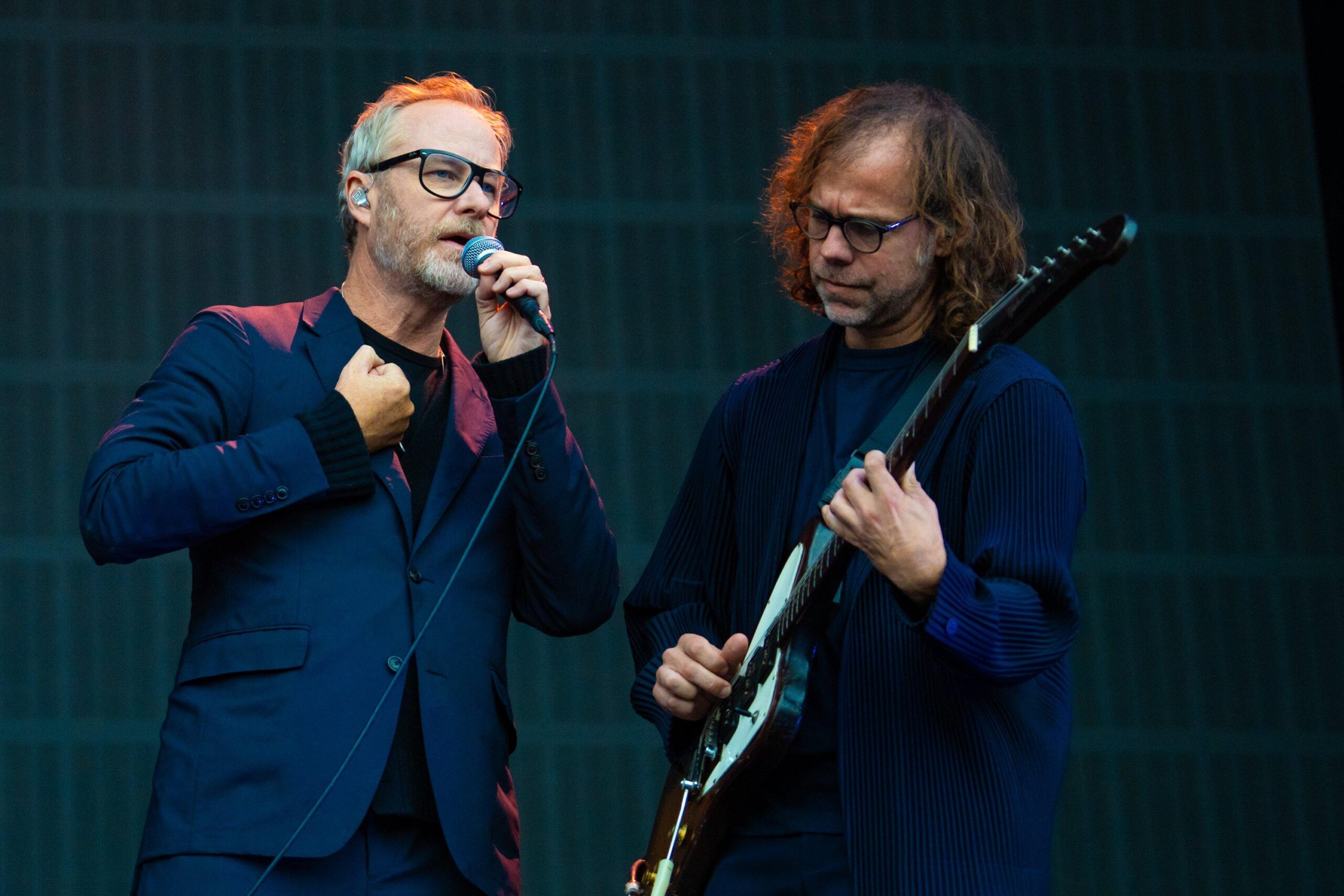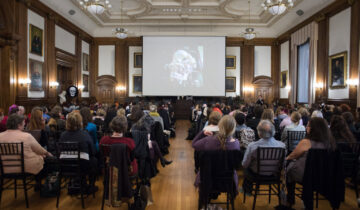
Onstage, 68-year-old Mulatu Astatke is as subtle and understated as the Ethiopian jazz he created. The music, a hybrid of traditional Ethiopian music and jazz, is subdued, somewhat melancholy, and at times psychedelic. Mr Astatke, the originator and composer of songs in this canon, plays his principal instrument, the vibraphone, with a light touch. Between songs, there is no small talk. He thanks the crowd, and coolly introduces the next number.
Mr Astatke has completed a Radcliffe Institute Fellowship at Harvard and been an artist-in-residence at MIT in recent years. But the seeds of his “Ethio-jazz” were planted in the 1950s and 1960s when he studied classical and jazz composition in Britain and America and honed his techniques while at Berklee College of Music, where he was the first African student. On visits to New York he hung out with jazz musicians such as John Coltrane and performed with the Duke Ellington orchestra in Ethiopia in the 1970s.
The full interview with Mulatu Astatke is at the ECONOMIST. The interview also continues here, after the jump.
Mr Astatke’s name resurfaced in 2005, when his compositions appeared in the soundtrack of Jim Jarmusch’s film Broken Flowers. A busy time of performing, recording, teaching, and composing has since followed.
Mr Astatke is doing a world tour at the moment and Baobab spoke to him on his London stop when he performed at the Barbican Centre with the London-based group, The Heliocentrics.
Baobab: While at Berklee in the late 1950s and early 1960s, you started to combine what you were learning about jazz theory with the Ethiopian music you had grown up with. How did that happen?
Mulatu Astatke: My experiences in Boston and New York opened my eyes. I became a student of jazz composition and learnt how the music comes together. It helped me quite a lot, and helped me to find Ethio-jazz. There were so many great musicians at that time, and I lined up with everyone else to watch them. I met John Coltrane, I saw Bud Powell. Now I see people lining up to see me in Paris and Berlin. That’s so beautiful to me. I’ve been very lucky.
Baobab: Since then you seem to have focused on fusing traditional Ethiopian music with jazz and worked hard to develop a distinct voice and style. Is that fair?
MA: Fusion and contribution, that’s my thing. There have been tribes in Ethiopia for centuries. Then we see Charlie Parker and the music he’s playing using diminished chords. I always say that Africa gave to jazz its whole feeling and conception. Not only the drums, but the science. Musicians are like scientists, just with different chemicals. There’s no difference between science and music, we just deal with sound. We are scientists of sound.
Baobab: Ethio-jazz has a melancholy sound to it. Why is that?
MA: We play five against twelve. This is a pentatonic scale that has been fused with a 12-tone progression. My thing was to combine these two without losing our character. The five is floating on top. You see this in Asia, in Japan, in Algeria. We have four different modes, and three modes for church music. It’s very beautiful. It’s all in how you approach the scales and the notes.
Baobab: You’ve opened a jazz village in Addis to train young Ethiopian musicians. What are your goals for the centre?
MA: It’s an information centre. We host jazz concerts and Ethiopian plays, and teach Ethio-jazz. We want to promote music to young pupils who have talent but who have never had a chance. We’re teaching the science of music—arranging, composing. I tell my students, learn the science of music first, don’t just jump in too quick. There is a line you have to follow.
Baobab: What kind of music are your students interested in?
MA: Lots want to study Ethio-jazz, but many like dancehall, reggae and hip hop—music with more dancing and jumping. There are few outlets for classical and jazz. There are more and more guitar and bass players now because all they see on television is people with guitars jumping up and down.
Baobab: Your music was featured in the soundtrack for Jim Jarmusch’s 2005 film Broken Flowers. How did that collaboration come together?
MA: I was playing in New York and I was told he was coming to the show. I didn’t know who he was but said to invite him anyway. He said he had been looking for the right music for his film for six years, and he thought my music was it. I said “no problem”. Six months later he called, and that was it. And people have loved it.
Baobab: In what other ways has your music reached a wider audience?
MA: I’ve been sampled by hip-hop artists like Naz and now the Somali rapper K’Naan. Man, it’s exploding, I tell you.
Baobab: You recently composed a score for an Ethiopian film called “Lalumbe.” How did you approach the project?
MA: The film is a love story about people from the Hamer tribe in the south of Ethiopia. This was the first time I’ve worked with their tribal music and culture—hey hold drums on their back and jump and clap. I used different instruments and dancers to create beautiful fusion music for the film.
Baobab: You’re also working on an opera. How is it shaping up?
MA: I’m still working on it. The composition includes excerpts from Ethiopian hymns for Lent. The opera will include choirs, strings, trombones, and an ancient Ethiopian conducting stick. I hope to perform it in a church in Lalibela in North Ethiopia that is carved from a single stone and also in Europe. I decided to work on this project while I was at Harvard. It will be a big challenge for me but I want to see what people will say.
Baobab: Do you think that the music you’ve created over the years is revolutionary?
MA: It’s a cultural revolution. Why not give the world something different?. As long as you can play your own music and combine it with something else, you will have no problems. But it is a challenge, a beautiful and great challenge.
Photo: passetti



